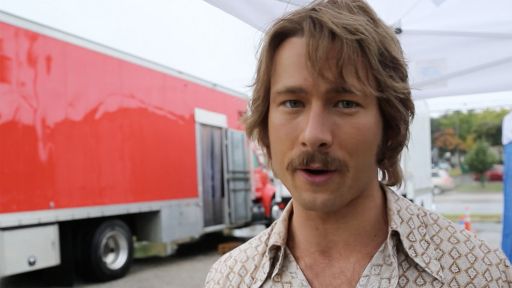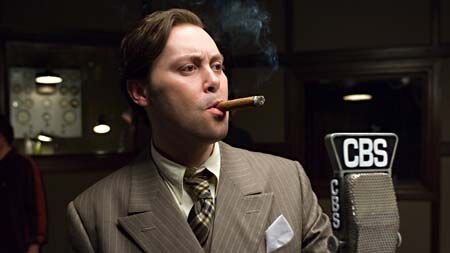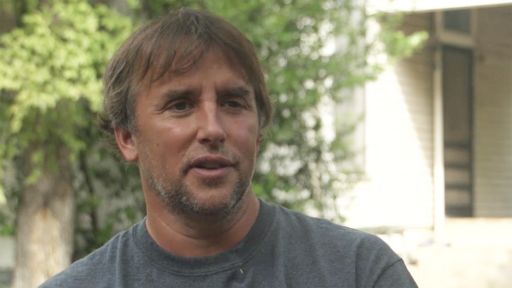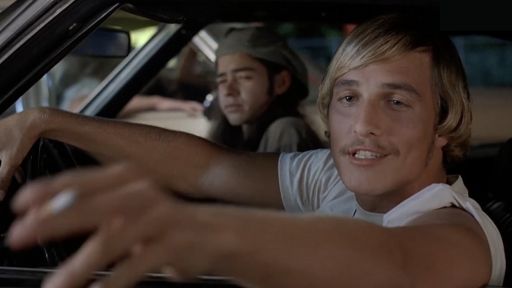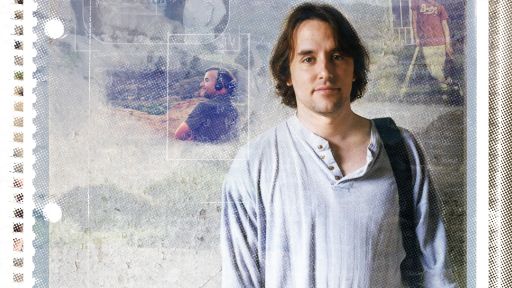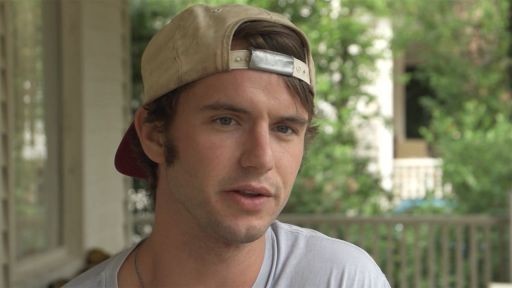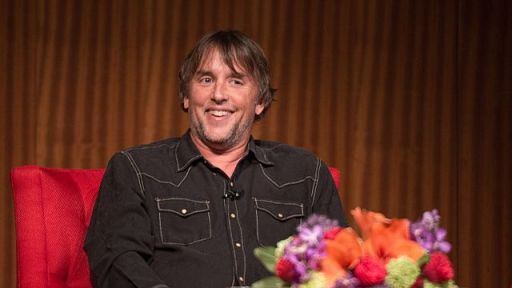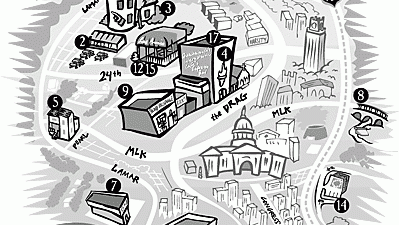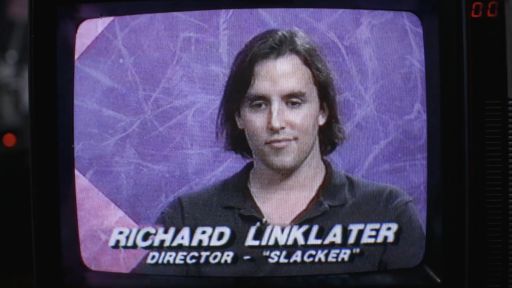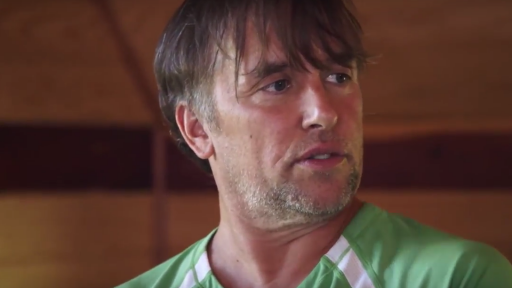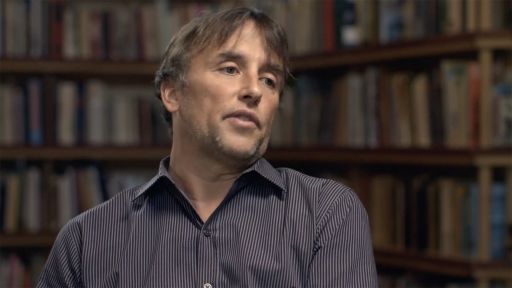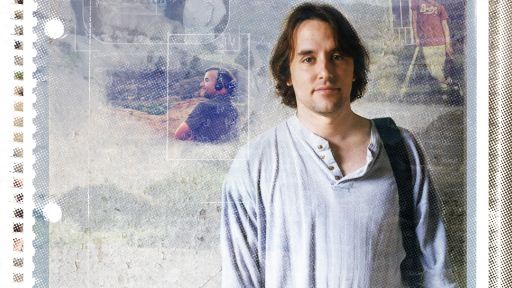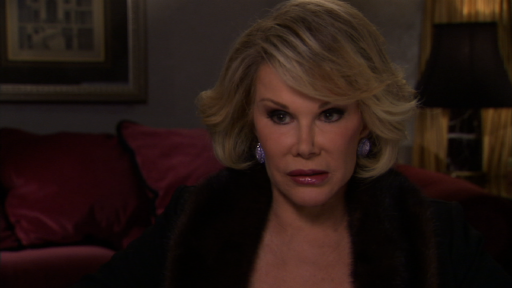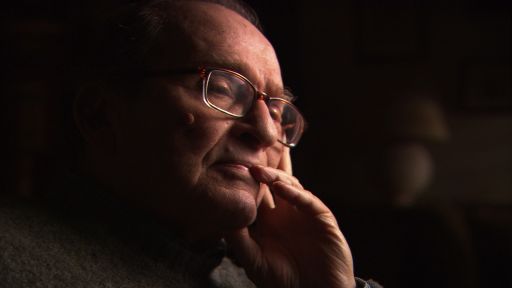Written by Louis Black, this article was originally published by the Austin Chronicle on March 27, 1998. Read the original piece here.
Racing up I-35, we’re at our exit in about 20 minutes. Right near the exit, we pull off the access road and onto a large field filled with cars, where we park. Soon we’re picked up by vans and taken down and around the field to a staging area. Here there are trucks, cars, vans, tents, and crew. We grab a ride in yet another van and soon we’re walking down a field to a 1920s Western/Midwestern town, with a few storefronts, a stable, and a few townspeople scattered about. Within an hour, we’ll watch three men ride out the only road through town, having just finished robbing the bank. One of them turns around, curses, the rest turn around and curse, a car has come up behind them, an old Model-T type manned by a sheriff and a deputy. They begin to chase the riders and the riders take off. In the middle of this afternoon shot for The Newton Boys, a $27 million Twentieth Century Fox production, wanders Richard Linklater. The film was not only shot entirely in the Austin area, it was conceived, and the pre-production and post-production were all done, locally. Linklater is wearing the same uniform, T-shirt and pants, that he’s always worn; he seemed relaxed and confident. He is making a movie that he has dreamed about making for two years and it is going well.
The first time I visited a Linklater set was back in the late Eighties when the Austin Film Society crew (as I thought of them then) were filming Slacker. The day I was there, they were shooting out of a lone van. Lee Daniel was on camera, d. Montgomery working sound, with a crew of maybe three. They were having a hell of a lot of fun and working surprisingly smoothly and swiftly. The scene was carefully worked out, rehearsed, and shot. Still, I thought this was another local student production and no one was more surprised than I when Slacker proved to be such an influential and important movie. It was not only a critical hit but a seminal event in independent filmmaking. Linklater’s effort, appearing far more casual than it really was, inspired a generation of filmgoers to become filmmakers. After this success, Linklater and company (including producer Ann Walker-McBay and screenwriter/all-round team player Clark Walker) decided to stay in Austin. Eventually, Linklater’s production company Detour secured an office building and moved the operation there. At this same time Linklater continued to actively serve as the artistic director of the Austin Film Society. Although he was now talking and dealing with Hollywood, Linklater was still living deep in the heart of Texas.
Driving up to his next set made me nervous. Dazed and Confused was Linklater’s first studio production with a budget of around $5 million. Driving there through the night, first there was just the dark. Then we came on a very long stretch of road with cars parked on both sides. After the cars came the trucks, equipment trucks, dressing-room trucks, catering trucks. Then we hit the people, crew members, and extras wandering everywhere. The last time I had seen Linklater and Daniel making a movie they were using one van.
In the middle among extras and crew, cast and hangers-on, Linklater and Daniel were working on making their own movie. I was worried that they would lose this movie among all the moviemaking apparatus grown up about them. Working off the back of the truck, Rick and Lee conferred, heads together, talking, looking exactly the same as they had when four or five people waited on them at the G-M Steakhouse on Lamar.
Word on the film from the set and some Film Society/Detour loyalists was mixed. They were nervous about the movie; was it working? The size of the budget, compared with the previous effort, added to the worry.
Dazed and Confused blew me away and remains one of my favorite all-time films. Linklater and crew’s sophistication on this effort was a real surprise. I realized that a lot of what I thought of as innocent and naïve in Slacker‘s film-storytelling structure was actually conscious and deliberate style. There was a real sense here of this production having been guided not only by a mature cinematic hand but a generational philosopher. Linklater’s films are an attempt to understand the growing-up process. Not simply in terms of adolescent angst, but more as to how, in a world full of choices, we decide who we are going to be (or don’t decide). What are the choices and the influences that lead us to be who we are and who we are going to become? This is the central theme in all of Linklater’s work.
The next two films, Before Sunrise, shot in Vienna, and subUrbia, shot in Austin, showed Linklater’s growing skills as a stylist and established his mastery at working with actors. Both films were loosely formed and occurred in a contiguous time period, consistent with his two earlier films. Plans for The Newton Boys actually began before subUrbia, but when the start date had to be pushed back, Team Linklater worked up a relatively quick production schedule for subUrbia. Based on Eric Bogosian’s stage play, it’s the only time Linklater has shot without really participating in writing the script.
Walking around the set of The Newton Boys that day was an experience. Here was a big sprawling set, a small army working on the picture, and Linklater as causal as he could be, was still clearly in control. Anne Walker-McBay was producing, Clark Walker had co-written the script, but for the first time Rick was working with cinematographer Peter James, rather than Lee Daniel – it marked Linklater’s first film without Daniel. No worries this time; beyond the van and despite the trucks, this was about vision, not commerce; experience, not just ambition. What was most obvious was that Linklater had grown up – he was no longer a maturing artist but had become an important American filmmaker at the peak of his powers. The Newton Boys continues to explore the themes central to his work, it’s beautifully acted and nuanced, and is a full- blown Texas story. No review here, though you should go see it, but for all of us, where Linklater pitches his next set is always of interest. The changeover from a van to a fleet of trucks is not a switch from low-budget to big-budget; the transition is the evolution of skill and imagination. The Newton Boys is a story of decisions and how they do and don’t get made, but it is also a Texas-sized movie about Texas, a work Linklater was born to make.
Funding for Richard Linklater – dream is destiny is provided in part by the National Endowment for the Arts.

